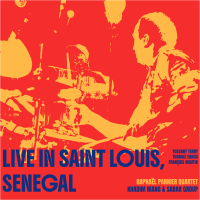Home » History of Jazz Timeline: 1947
History of Jazz Timeline: 1947
Bop is beginning to dominate American Jazz.
With Bebop well established at this point, it is clear that the mainstream of Jazz is from New Orleans through Swing to Bebop. Bop currently rules.
Early in 1947, Charlie Parker, Dizzy Gillespie and others record some landmark sides for Dial in California (Ornithology, Loverman, Bebop, etc.) and in New York (Scrapple from the Apple, Dexterity, etc.). These cuts can be found on the Stash CD's which cover the Dial sessions.
Parker forms the Charlie Parker Quintet with Max Roach on drums, Miles Davis on trumpet, Tommy Potter on bass and Duke Jordan on piano. Sides are cut for Dial and Savoy. Ross Russell of Dial thinks these are Parker's best.
In March, Dean Benedetti begins following Parker and recording him (until 1948). The complete recordings can be found on the Mosaic CD The Complete Dean Benedetti Recordings. More noteworthy CD's covering this era are Savoy CD's The Charlie Parker Memorial: Vol 1 and The Genius of Charlie Parker as well as the Stash CD's The Legendary Dial Masters: Vol 1 and Vol 2.
Trumpeter Dizzy Gillespie records Manteca with percussionist Chano Pozo. The Cuban influence adds rhythmic complexity to Gillespie's big band sound.
Dizzy and George Russell's Cubana Be, Cubana Bop contains Modal Jazz elements way before its time.
Bassist Al McKibbon joins Dizzy's band.
Bud Powell records under his own name and with Charlie Parker.
Monk makes a series of recordings (first time as a leader) for Alfred Lion at Blue Note. These recordings begin to establish his reputation as a genius. See the Blue Note CD's Genius of Modern Music: Vol 1 and Vol 2. Some notable titles include Ruby, My Dear; Straight, No Chaser; Round Midnight; etc. The work is still not pouring in, however.
Drummer Art Blakey becomes interested in his African heritage. He travels to west Africa to learn to play like an African drummer. He remained in Africa for two years.
Trumpeter Fats Navarro is at his peak. He will not live long due to drug addiction.
Miles Davis becomes Charlie Parker's trumpet player at the age of 21.
Coltrane is becoming increasingly impressed by Dexter Gordon's work on the tenor saxophone.
Charlie Mingus sells his first arrangements Mingus Fingers to Lionel Hampton.
Saxophonist Lee Konitz (a Lenny Tristano disciple) is now playing in the band of Claude Thornhill.
Sonny Rollins graduates from High School.
The big band of Earl Hines disbands. This ends a period of nearly twenty years in which Earl had a good big band.
The saxophone duels of Dexter Gordon and Wardell Gray are put on record in June of this year.
Woody Herman's saxophone playing "Four Brothers" become the center of Herman's band. Stan Getz is the best known "Brother".
 Louie Armstrong and Billie Holiday appear in the movie New Orleans. Louie plays himself and Billie plays a maid.
Louie Armstrong and Billie Holiday appear in the movie New Orleans. Louie plays himself and Billie plays a maid.
Armstrong wins the Esquire Gold award for trumpet and vocal.
Armstrong quits recording for Victor and returns to Decca.
Ellington wins Esquire Gold award.
Eddie Condon replaces Swing oriented Dixielanders with "more authentic" players. Dave Tough and Max Kaminsky are out, George Brunis and Bill Davison are in.
Mahalia Jackson (whose mentor is Thomas E. Dorsey -- aka Georgia Tom -- the father of Gospel) cuts Move on up a Little Higher which sells more than 2,000,000 copies.
Sister Rosetta Tharpe will sing only Gospel from now on.
George Shearing becomes a permanent U.S. resident and works extensively on 52nd street.
The University of North Texas in Denton, Texas offers a Jazz degree. This is the first Jazz degree to be offered in the United States.
Monthly magazine Swing Journal is founded in Japan.
Keyword Search
Disclaimer: Though we have checked our facts, this timeline may contain erroneous information. If you discover errors or omissions, please bring them to our attention.









